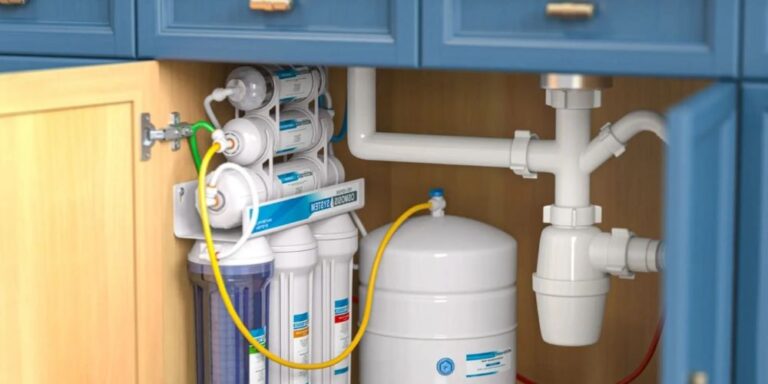Reverse Osmosis (RO) water purifiers have become a popular choice in households for delivering clean, safe, and refreshing drinking water. However, one common complaint among users is that the water from their RO system occasionally starts tasting bad. This unpleasant taste can be surprising, especially since these purifiers are designed to remove impurities. If you’ve noticed an odd or unpleasant flavor in your RO water, don’t worry. In this blog, we’ll explore the common causes of bad-tasting RO water and provide some simple solutions to help you fix the issue.
1. Dirty or Clogged Filters
One of the most frequent reasons for a bad taste in RO water is dirty or clogged filters. RO systems typically have multiple filters, including pre-filters, carbon filters, and post-filters. Over time, these filters can accumulate dirt, sediment, and other particles, which can compromise the taste of your water.
Solution: Regular maintenance is key. Most manufacturers recommend replacing RO filters every 6-12 months, depending on usage. If you’ve neglected filter changes, it’s time to replace them to restore the water’s freshness.
2. Worn-Out Membrane
The RO membrane is the core component of the purification process. This semi-permeable membrane filters out a significant amount of dissolved solids, salts, and contaminants. However, like any component, the membrane has a limited lifespan. As it ages, it can become less effective at removing impurities, which may result in poor-tasting water.
Solution: The RO membrane should be replaced every 2-3 years, depending on the water quality in your area and the usage of the purifier. If your water has started tasting off and you’ve had the same membrane for a long time, it’s time for a replacement.
3. Bacteria Buildup in the System
While RO systems are designed to prevent bacterial contamination, bacteria can sometimes build up in the water tank, pipes, or filters, leading to a foul taste or odor in the water. This is more likely if the system hasn’t been cleaned or sanitized for a long time.
Solution: Regular sanitization of your RO system is essential. Clean the storage tank and filters periodically with an appropriate sanitizing solution. It’s also important to keep the system’s surroundings clean to prevent bacterial contamination.
4. Mineral Imbalance
RO purifiers remove both harmful contaminants and beneficial minerals from the water. Some users find that their water tastes flat or metallic after purification because of this lack of essential minerals. Although RO systems are excellent for purification, they can sometimes strip the water of its natural taste along with the impurities.
Solution: Consider adding a remineralization filter to your RO system. This filter reintroduces essential minerals like calcium and magnesium, improving the taste and providing added health benefits. Many advanced RO systems come with built-in remineralizers for this very reason.
5. Contaminated Water Source
The quality of the water entering your RO system can affect the taste of the water it produces. If your water source contains high levels of certain contaminants, it may be overwhelming the system’s capacity to filter them out entirely, leading to an unusual taste in the output water.
Solution: Test the water quality of your source. If there are high levels of contaminants that your RO system cannot handle alone, you may need additional filtration methods. It’s also important to stay informed about changes in your local water supply.
6. Improper Installation or Maintenance
Improper installation or neglected maintenance can also result in bad-tasting water. Leaky pipes, misaligned components, or poorly installed filters can let contaminants slip through, compromising the taste of your water.
Solution: Always have your RO system installed by a professional. If you suspect a problem with your system, call in an expert to inspect and repair any issues. A timely check-up can prevent further damage and ensure the water quality is up to standard.
7. Stagnant Water in the Tank
If your RO system is not used frequently, the water in the storage tank can become stagnant, which can result in an unpleasant taste or Odor. Stagnant water can collect bacteria or develop a musty flavor, especially if the system hasn’t been flushed in a while.
Solution: Regularly flush the RO system to ensure that fresh water is always available. Using the system frequently and emptying the tank can help prevent stagnation.
Final Thoughts
If your RO water tastes bad, it’s usually due to one of these common causes. Routine maintenance and timely replacement of filters and membranes can significantly improve water quality. Regular cleaning and sanitization of the system, coupled with proper installation, will also ensure your RO water remains fresh and free from any unpleasant tastes.
When in doubt, it’s best to contact a professional for advice. A reliable RO Service Center can help you troubleshoot the issue and restore your system to optimal working condition. By addressing these concerns, you can enjoy the pure, refreshing taste of RO water once again.
Don’t miss: Understanding Ideal TDS Levels for Safe Drinking Water Across Delhi




